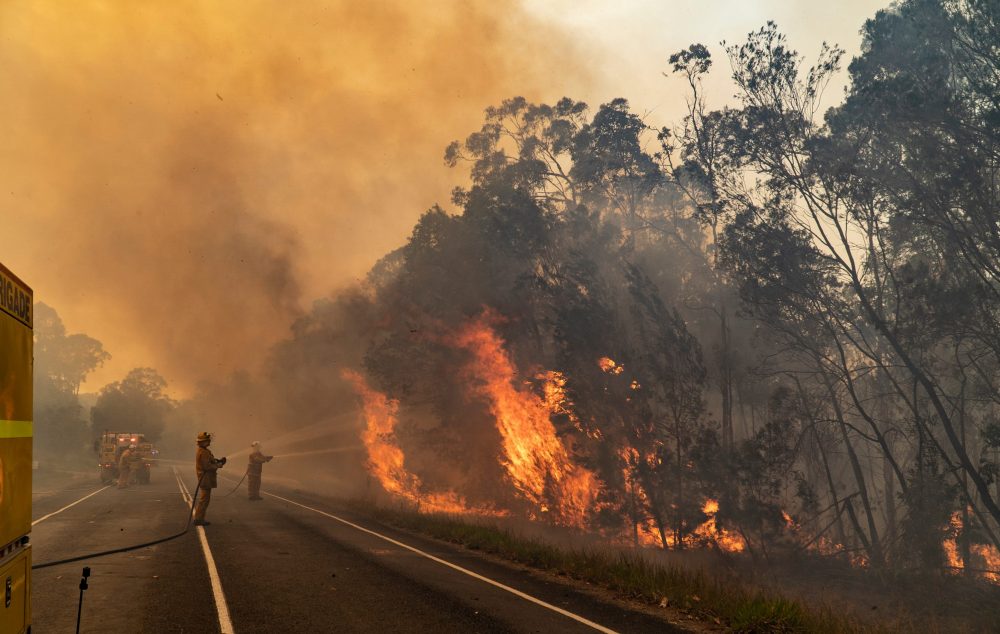Demystifying BAL Reports: A Guide to Recognizing Your Home's Bushfire Risk
Demystifying BAL Reports: A Guide to Recognizing Your Home's Bushfire Risk
Blog Article
Ensuring Shrub Fire Security With Proper BAL Record Analysis
In the realm of bush fire defense, the thorough analysis of Bushfire Assault Degree (BAL) reports stands as a cornerstone for protecting homes against the disastrous impact of wildfires. With environmental aspects and residential or commercial property features playing substantial duties in figuring out the level of threat, a detailed understanding of BAL ratings comes to be critical. Nonetheless, the actual essence lies not just in understanding these reports yet in deciphering them efficiently to develop customized fire defense approaches. By delving into the relevance of BAL record analysis, we discover a world where notified choices lead the course in the direction of strengthening home safety and security and strength in fire-prone regions.
Understanding Bushfire Strike Level (BAL)
In the world of bushfire protection, understanding the Bushfire Attack Level (BAL) is critical for ensuring efficient mitigation approaches. Understanding the BAL rating of a building is vital for property owners, contractors, and policymakers to implement proper steps to protect against bushfire threats.

Value of BAL Report Evaluation
A necessary aspect in bushfire security preparation involves the comprehensive evaluation of BAL reports to evaluate the possible threats and identify ideal reduction methods. BAL records offer important info concerning the prospective effect of bushfires on a home based upon various variables such as vegetation kind, distance to potential fire dangers, and incline of the land. Examining these records with precision is critical in establishing efficient bushfire defense steps customized to the particular risk profile of a property.
Carrying Out Fire Protection Measures
Implementing effective fire security measures is essential for protecting homes in bushfire-prone locations. Among the main ways to enhance fire protection is by developing defensible space around structures. This entails clearing up flammable plants, such as completely dry leaves and branches, within a certain span of the property. Additionally, setting up fireproof roof products can help in reducing the danger of embers igniting the roof during a bushfire. Appropriately kept gutters and displays are additionally important to avoid particles build-up published here that could sustain a fire.
In addition, having a appropriate and well-kept water system, such as a tank or swimming pool, can help firefighters in their initiatives to shield the residential or commercial property. It is very important to have a clear emptying plan in location and to guarantee that all homeowners know with the treatments. Additionally, having firefighting tools readily available, such as hoses and fire extinguishers, can assist in dealing with little area fires before they rise. Overall, carrying out a combination of these fire security actions can dramatically increase the chances of guarding properties throughout bushfire occasions.
Mitigating Dangers in Fire-Prone Locations
To strengthen residential or commercial properties against bushfire threats, a calculated focus on mitigating threats in fire-prone locations is imperative. One critical facet of threat reduction is keeping defensible space around properties by getting rid of flammable greenery, making sure ample spacing in between trees and structures, and utilizing fireproof landscape design methods.
In addition, creating or retrofitting structures with fireproof materials and guaranteeing appropriate maintenance of roof coverings, rain gutters, and exterior cladding can substantially improve the property's resilience to bushfires. Creating and practicing a bushfire emergency strategy with all occupants, consisting of emptying procedures and interaction methods, is also important in mitigating risks effectively. By taking on a proactive technique to risk mitigation in fire-prone locations, homeowner can better safeguard their possessions and boost total bushfire readiness.
Ensuring Home Safety And Security and Resilience
Guaranteeing the safety and security and resilience of buildings in fire-prone areas requires an unfaltering commitment to robust safety nets and strategic planning. Property safety and security begins with implementing effective procedures to minimize fire dangers. This includes keeping a defensible space around the home by clearing combustible greenery, making sure appropriate upkeep of gutters and roofing my website systems, and utilizing fire-resistant structure materials. Routine upkeep of firefighting equipment, such as hoses and automatic sprinkler, is also crucial to building strength.
Resilience, on the various other hand, includes the capacity of a home to hold up against and recover from a bushfire. By proactively resolving these aspects, residential or commercial property proprietors can much better secure their assets and loved ones from the hazard of bushfires.
Conclusion
To conclude, ensuring bushfire protection via proper BAL record evaluation is crucial for recognizing the degree of danger posed by bushfires and carrying out required fire security actions. By minimizing dangers in fire-prone areas and ensuring building safety and security and durability, areas and individuals can much better prepare for and react to bushfire events. It is vital to focus on fire precaution to protect lives and property in these risky settings.
In the world of bush fire security, the meticulous evaluation of Bushfire Strike Level (BAL) records stands as a foundation for guarding residential properties versus the terrible impact of wildfires (BAL Report). Recognizing the BAL score of a building is vital for building proprietors, policymakers, and builders to carry out suitable actions to protect versus bushfire hazards

BAL reports provide important info regarding the possible influence click this of bushfires on a residential or commercial property based on various variables such as plants type, distance to possible fire hazards, and slope of the land (BAL Report). In general, executing a combination of these fire security steps can dramatically enhance the opportunities of protecting homes throughout bushfire events
Report this page